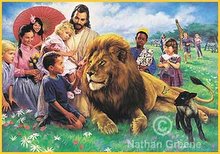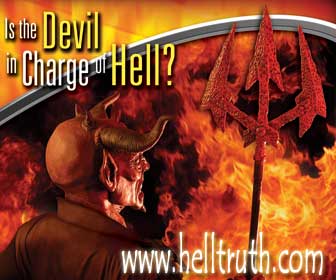Mysterious Rites Revealed

Continued from Tuesday....
In the previous entry we began examining the customs of an ancient religion whereby sacrifices were made to God. Our examination of this culture comes from the dusty manuscripts that have been unearthed near the Holy Land and preserved in museums and private collections around the world. Now we continue from where we left off examining what these sacrificial rites entailed.
We saw in the last post that the first sacrifice took place in the Garden of Eden, whereby God made for Adam and Eve coverings of Skin. That skin came from the first sacrifice, the first death that Adam and Eve had ever seen, and it impressed upon them the repugnance of sin. Sin being the breaking of the Commandments. That first sacrifice foreshadowed the coming of a Savior Who would take the full penalty for sin upon Himself whereby the blood of lambs was only substitutionary for the sins of a repentant sinner. We note that the rites of the Hebrew Sacrifices written by the hand of Moses and put into a little Book, called the Book of the Law, gave details on how sacrifices were to be made for the remission of sins. The purpose of this ongoing blogspot is to show how each sacrifice foreshadowed the coming life of Jesus and His Ministry on our behalf.
The picture below shows the arrangement of the Sanctuary and the articles found inside. Exodus Ch25. An outer wall surrounded the Sanctuary and kept it separate from the nation of Israel. On the eastern side was the entrance. In the outer court was an Altar for the burnt offering and a Laver filled with water. The Sanctuary itself consisted of two compartments. The first compartment known as the Holy Place contained to one side the Table of Shew bread supporting 12 loaves of unleavened bread. On the other side was the 7 Branched Golden Lamp stand filled with oil, and next to the veil that separated the two compartments was the Altar of Incense. The veil separating the Holy from the Most Holy Place (Holy of Holies) extended from the floor upward but not completely to the ceiling. The roof of the Sanctuary was made of Ram Skins.
Inside the Most Holy place, where only the High Priest was allowed to enter one day per year, was the Ark of the Covenant. The Ark of the Covenant, shown in the picture below, contained inside its lid the 10 Commandments written on Stone by the finger of God. In a side compartment to the Ark was housed "The Book of the Law" of the sacrificial ordinances written on parchment by the hand of Moses.
The layout of the Sanctuary and the rites performed inside were representative in symbol to the ministry of the Messiah Who would come. Here we will look at the symbolism of the Sanctuary; in the next post we will discuss the rites that took place inside the Sanctuary and their meaning in further detail.
The outer court represented the wall of separation that exists between sinful man and God. The Holy Place represents the first portion of the Messiah's Ministry. Inside the Holy Place the table containing the 12 Loaves of Shew Bread represents the Word of God. This bread was unleavened representing pure truth and it was given to the 12 Tribes of Israel for a witness. This unleavened bread, pure doctrine, the Israelite (meaning overcomer) was to share with others. On the south side of the Holy Place we see the 7 Branched Lamp stand containing oil with flames burning bright. Oil is symbolic of the anointing of the Holy Spirit. This oil of the Spirit is what produces the burning desire in the righteous to keep and share the Truth of God's Word. The seven flames represent the Seven Spirits of God. The light shed represents the life and example that the righteous are to lead and to share with others by example. On the wall next to the veil we find the Altar of Incense. On this altar the prayers of the repentant sinner, mixed with the blood of a sacrificial lamb was sprinkled. This mixture would burn and produce smoke that would ascend upward; symbolic of the righteous prayer going upward to Heaven to God.
Beyond the veil, in the Most Holy Place, was the Ark of the Covenant. Inside the Ark under the "Mercy Seat" was housed the Commandments of God. Two Carved Angels with wings open covered their faces from the brightness shining above the Mercy Seat. On this Seat, representative of the Throne of God in Heaven, shined forth the “Holy Shekina" or the visible presence of the Lord. When the Prayers of the sinner were offered on the Altar of Incense the smoke would ascend over the veil and into the Most Holy Place. When it came into the presence of God the light of God's presence would light the smoke and the entire Sanctuary would fill with the Glory of God as an expression that He had accepted the atonement for sin. On occasion this Glory shined so bright that the Priests had to exit the Sanctuary. The carved Angels veiled their faces from the Mercy Seat because the scriptures reveal that God's Presence is a "Consuming fire". The veil separating the Most Holy place from the Holy protected the Priest daily ministration from this consuming brightness.
Noting that the Israelites made this earthly sanctuary from the copy of the one Moses was shown in Heaven, what lesson can we see regarding God and the Holy Angels that stand in His presence ready to delightfully execute His will and sinful man's relation to them?
In our next post we will go into further detail and show how this and other symbolism pointed forward to the Messiah and how Jesus meets the test of Scripture.



No comments:
Post a Comment